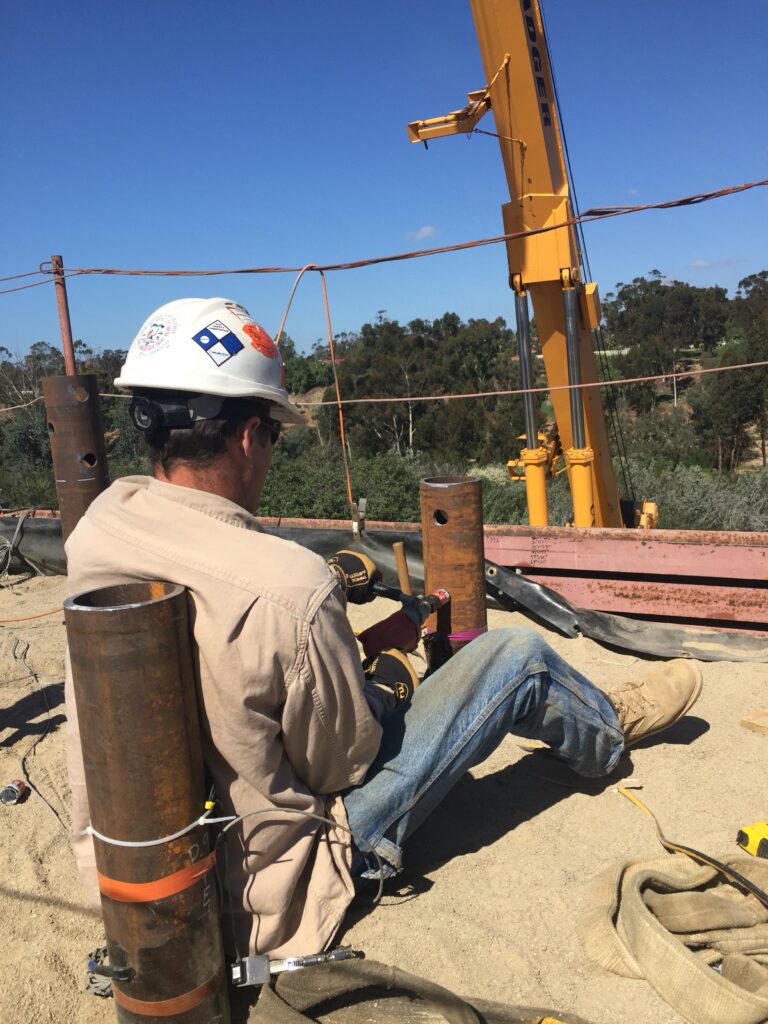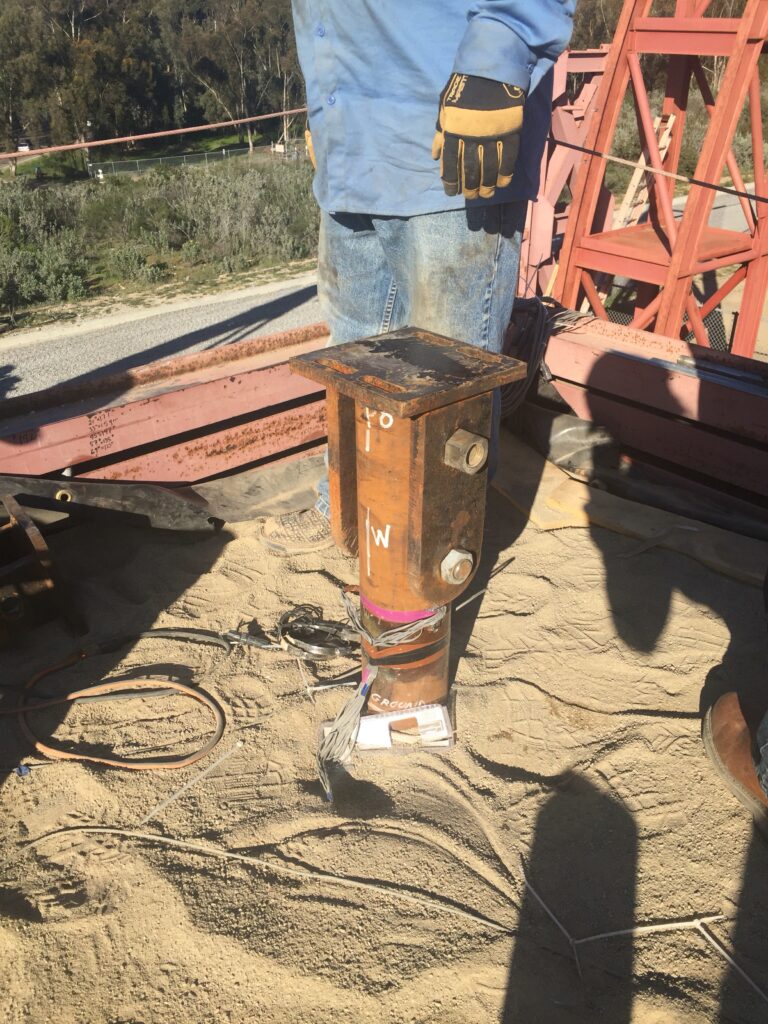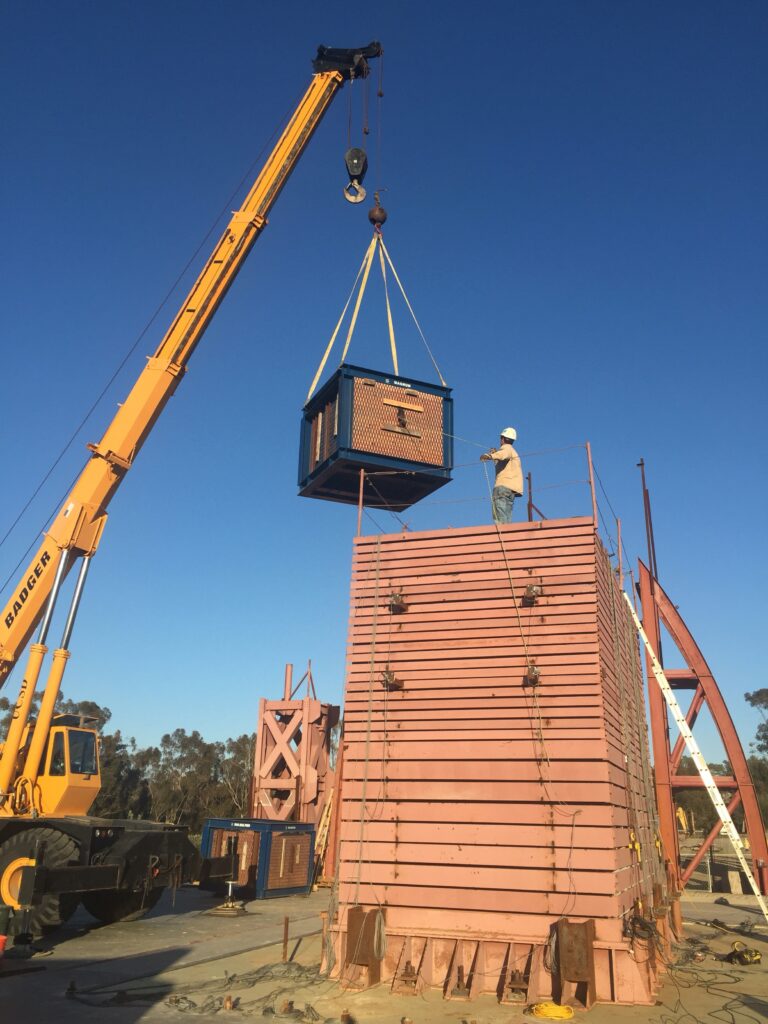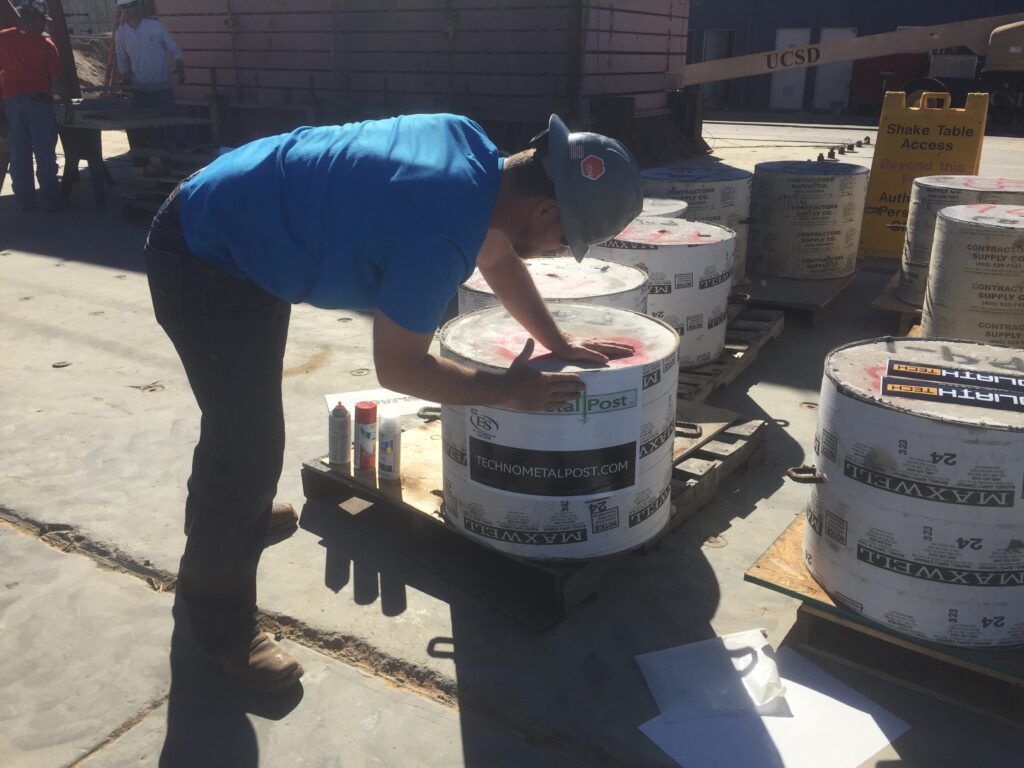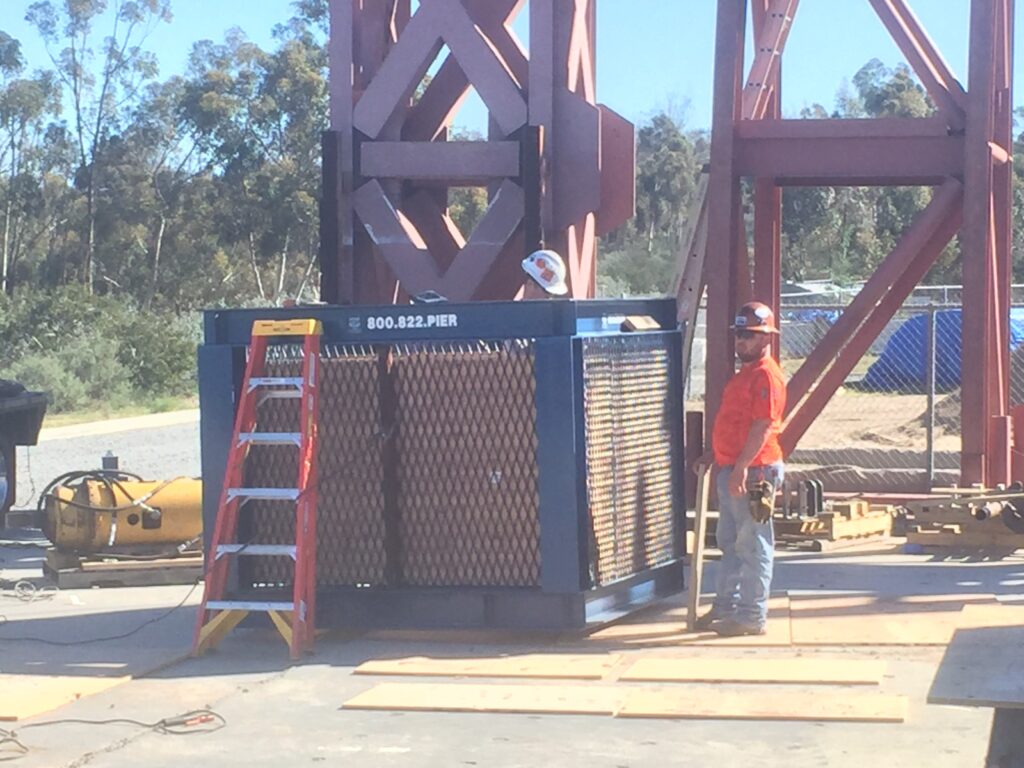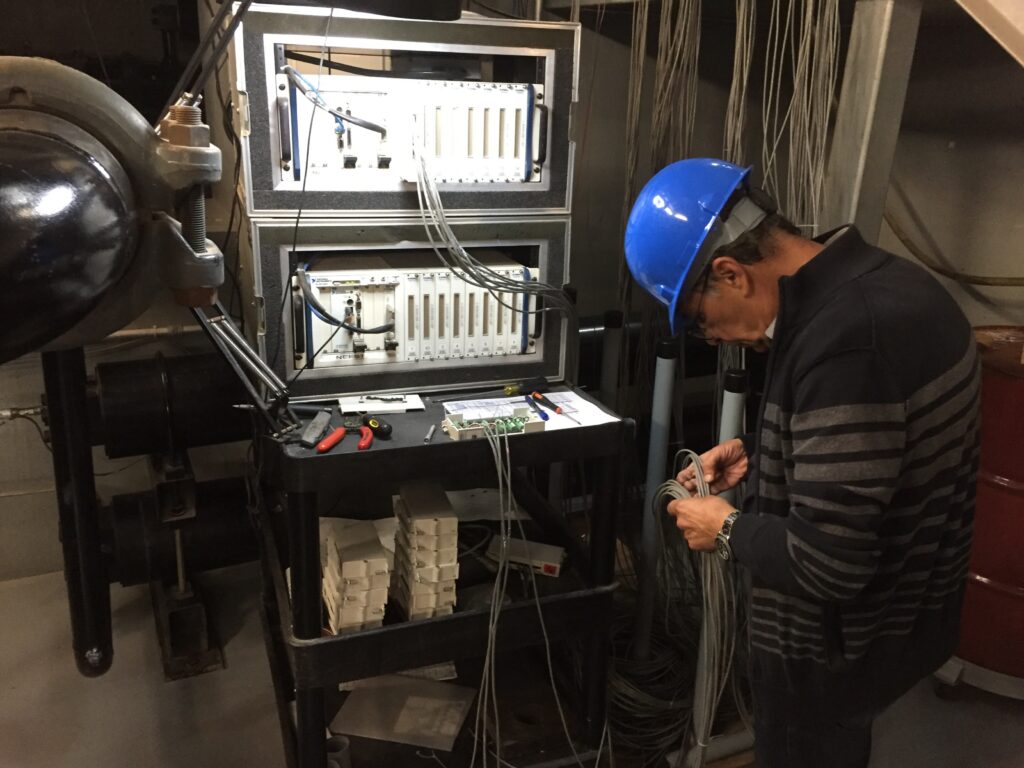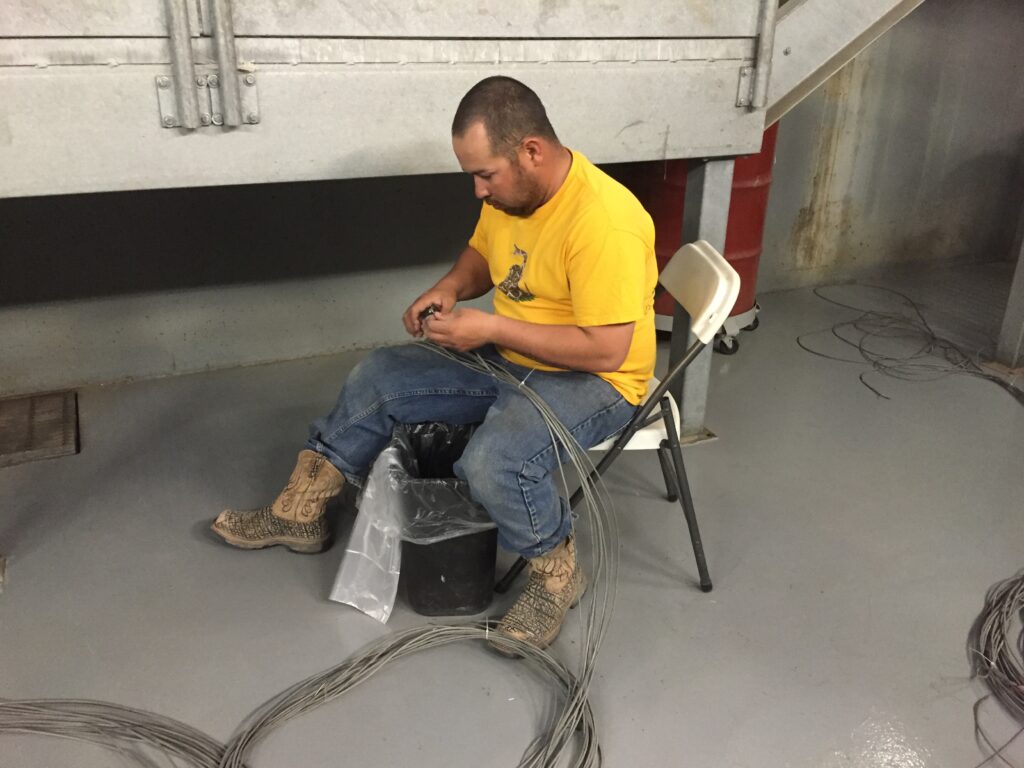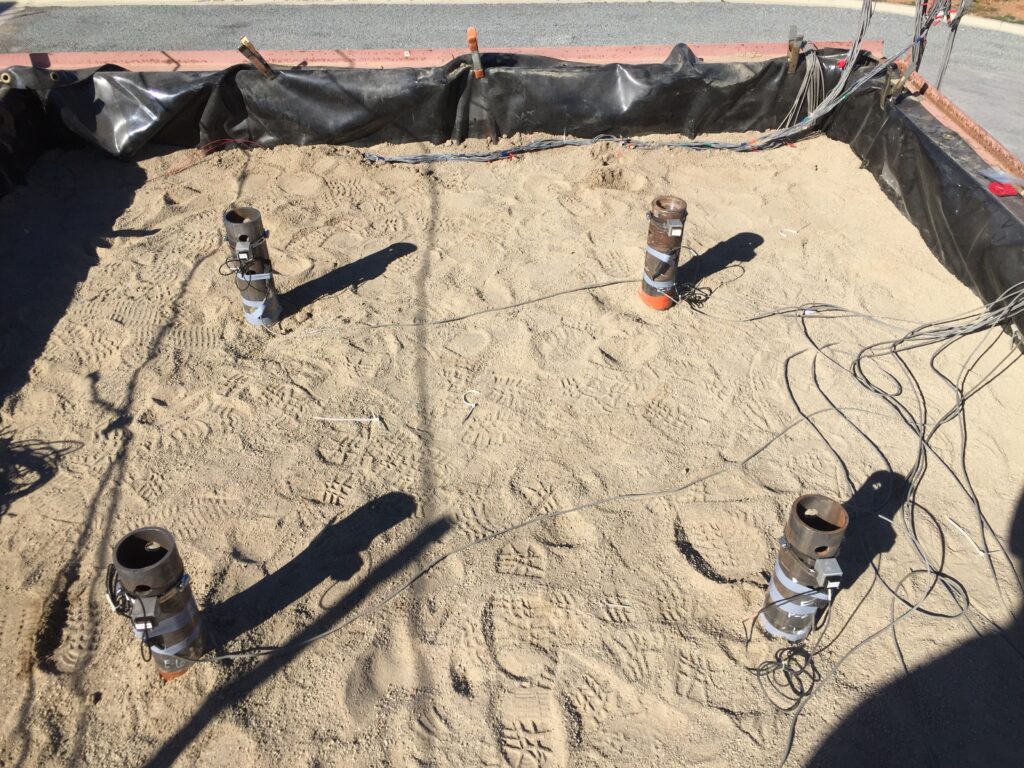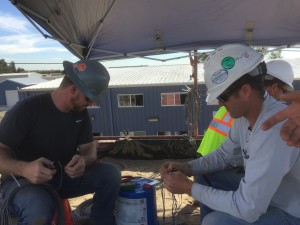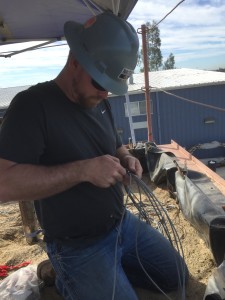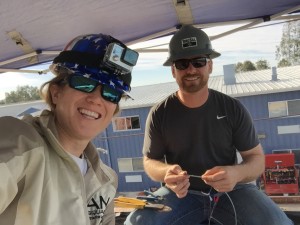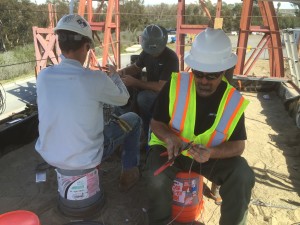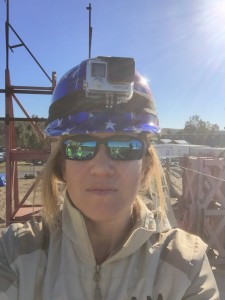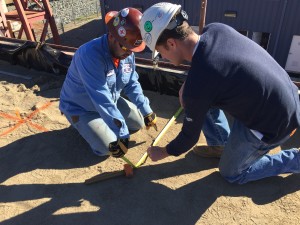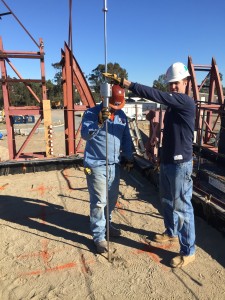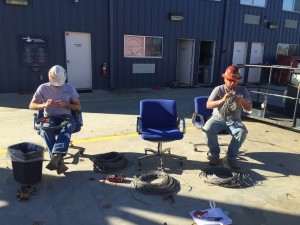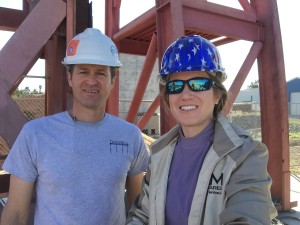

The three week test sequence is finally complete. We pulled the skids off yesterday afternoon and are un-installing the piles today (Wednesday, February 24, 2016). I will take lots of pictures of the piles as they come out of the sand box – I want to check out what exactly happened to some of the strain gages – we have to be able to gage piles and there really isn’t a standard, proven method. One of the great pieces of information from this test is how to gage piles in very dense sands (N=35)… or how to better gage piles in a dense sand. It isn’t a trivial matter. I am looking forward to helping our industry get a better handle on that.
We stayed on schedule the entire time thanks to careful planning and preparation, the generous cash and in-kind donations of my DFI sponsors and my on-site contractor, Torcsill Foundations, who worked seamlessly with the site staff to support the project. These guys are the best and the site staff praised them everyday for their professionalism, work ethic and fantastic attitudes. They got the job done!
The local news media came out yesterday to shoot the last big skid shake.
http://www.10news.com/news/engineers-test-new-technology-to-protect-buildings-from-earthquakes
http://www.kpbs.org/news/2016/feb/23/san-diego-earthquake-simulator-rocks-metal-pilings/
Discovery Canada was onsite for about 8 hours yesterday and their Daily Planet show will air in about 3 weeks. I’ll keep everyone posted on the additional news coverage and data management.
We are tentatively scheduled to present preliminary findings at Super Pile ’16 in Chicago in June, the HPTC specialty seminar in LA in July and the DFI International Conference in NYC in October. I’ll hopefully be able to thank each of you in person for your help with this project when I see you.
